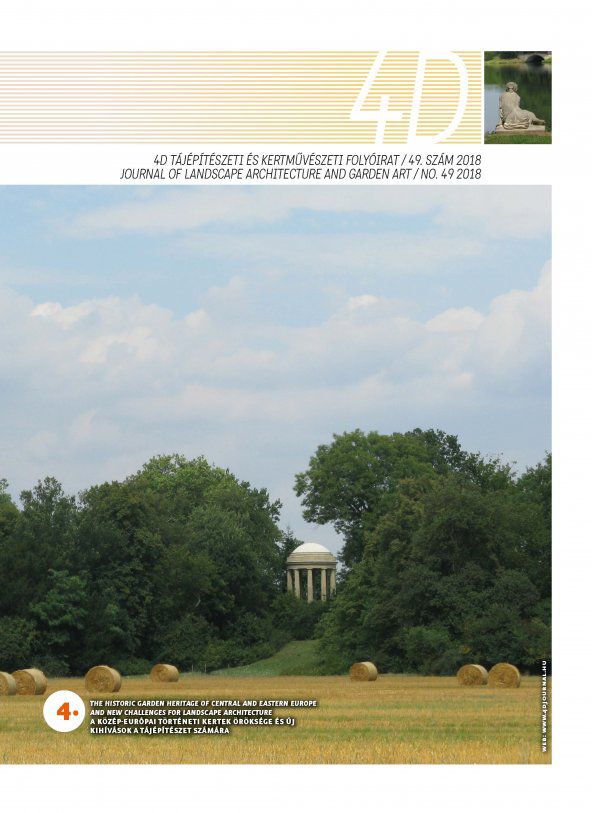A közép-európai történeti kertek öröksége és új kihívások a tájépítészet számára
Kulcsszavak:
historizmus, olvashatóság, tervezési elv, tervezési kísérlet, tervezési ismeretAbsztrakt
Ebben a tanulmányban a közép- és kelet-európai, s azon belül is különös tekintettel Magyarország tájépítészetének helyzetét és szerepét ismertetjük a szakterület európai történelmében. A legfontosabb kérdés az elemzés során az örökség szerepe a kortárs tájépítészeti tervezésben.
Hivatkozások
Zeisel, J. Inquiry by design — Environment / Behavior / Neuroscience in architecture, interiors, landscape and planning. New York, Norton & Co., 2006, rev. ed.
Sørensen, C.T. The origin of garden art— Havekunstens oprindelse. Kopenhagen, The Danish Architectural Press, 1963; Solomon, B.S. Green architecture and the agrarian garden. New York, Rizzoli, 1989 3.
Baridon, M. L’eau dans les jardins d’Europe. Wavre, Mardaga, 2008.
Chadwick, G.F. The park and the town — Public landscape in the 19th and 20th century. London, The Architectural press, 1966.
Farhat, G.Les grandes perspectives dans l’oeuvre de Le Nôtre. In: Bouchenot Déchin & Farhat, 2013. p 170–187.
Letöltések
Megjelent
Folyóirat szám
Rovat
License
Copyright (c) 2018 Martin Van Den Toorn

This work is licensed under a Creative Commons Attribution-NonCommercial-NoDerivatives 4.0 International License.
A folyóirat Open Access (Gold). Cikkeire a Creative Commons 4.0 standard licenc alábbi típusa vonatkozik: CC-BY-NC-ND-4.0. Ennek értelmében a mű szabadon másolható, terjeszthető, bemutatható és előadható, azonban nem használható fel kereskedelmi célokra (NC), továbbá nem módosítható és nem készíthető belőle átdolgozás, származékos mű (ND). A licenc alapján a szerző vagy a jogosult által meghatározott módon fel kell tüntetni a szerző nevét és a szerzői mű címét (BY).









 intézetigazgató: Dr. Fekete Albert
intézetigazgató: Dr. Fekete Albert

